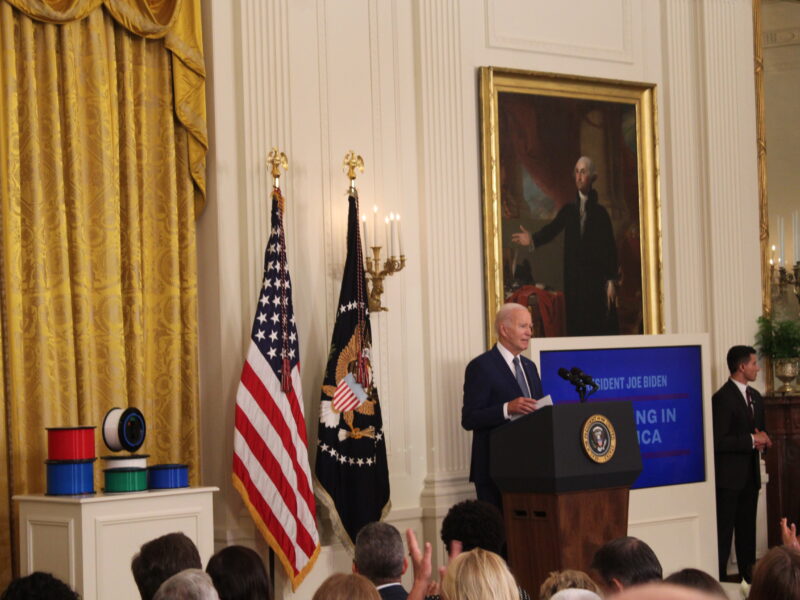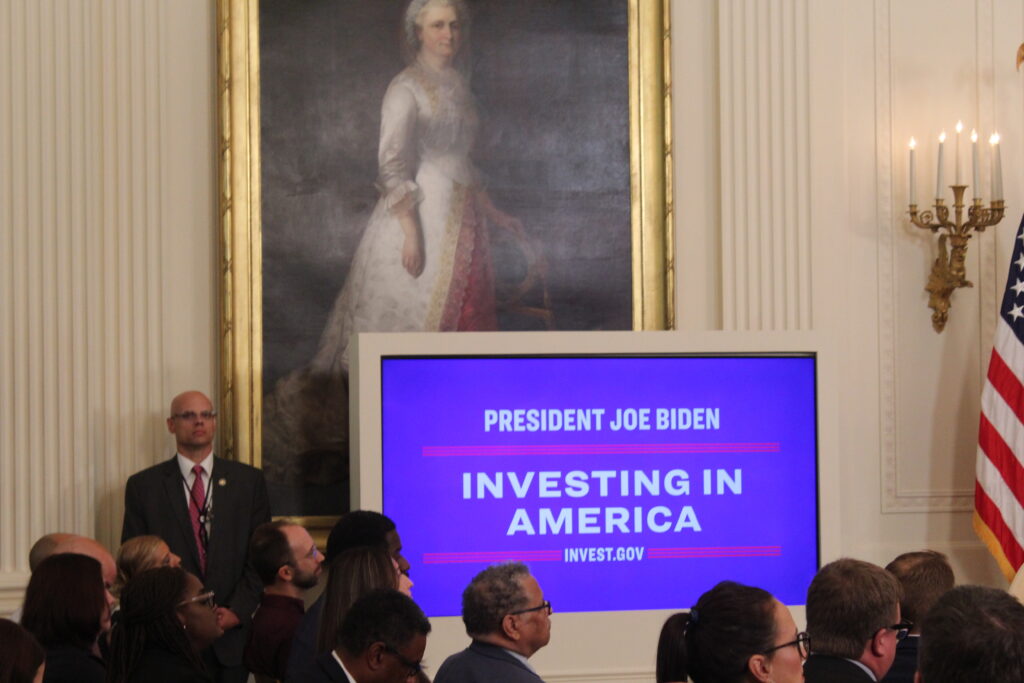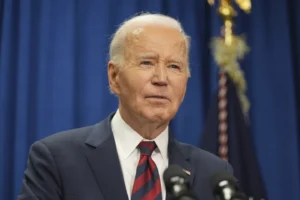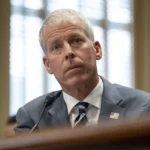White House Announces $42 Billion in New Funding to Expand Internet Access
Wyoming stands to receive almost $350 million in new funding, officials say
- Published In: Politics
- Last Updated: Jun 27, 2023

President Joe Biden announced $42.5 billion in new funding to expand access to high-speed internet access throughout the country on Monday. (Wyoming Truth photo by Jacob Gardenswartz)
By Jacob Gardenswartz
Special to the Wyoming Truth
WASHINGTON — President Joe Biden on Monday announced a major new investment of federal funding to expand access to high-speed internet throughout the nation, as White House officials are set to embark on a cross-country tour to sell the president’s economic vision to the American people.
The over $42 billion in new broadband funding — allocated to the Broadband Equity Access and Deployment program, known as BEAD — was approved by Congress in 2021 through the Bipartisan Infrastructure Law. Representing the largest single investment in internet access in U.S. history, the funds will be doled out to states over the next two years, with Wyoming set to receive nearly $350 million according to figures from the National Telecommunications and Information Administration (NTIA).
“It’s the biggest investment in high-speed internet ever, because for today’s economy to work for everyone, internet access is just as important as electricity or water or other basic services,” Biden said during remarks announcing the funding in the White House East Room.
The funds will help close the “digital divide” for the roughly 8.5 million Americans and small businesses without reliable internet access, Biden noted. He added that the investment will serve as a centerpiece of his administration’s goal to equip the entire nation with high-speed internet services by 2030.
Speaking to the impact of the COVID-19 pandemic on remote work, Biden argued that “high-speed internet isn’t a luxury anymore; it’s become an absolute necessity.”
White House draws parallels to FDR
In the lead up to and during Monday’s event, White House officials repeatedly likened the internet investment to the Rural Electrification Act, the 1930s-era law which provided low-cost loans to American farmers to expand their access to electricity as a part of President Franklin D. Roosevelt’s “New Deal” agenda.

Just as FDR’s electrification act “made a historic investment in rural areas bringing electricity to nearly every home in America, President Biden and Vice President Harris are committed to leaving no community behind as we connect everyone in America to high-speed Internet,” Mitch Landrieu, the senior advisor to the president tasked with overseeing the implementation of the infrastructure law, said in a statement.
And the announcement comes as Biden and officials throughout his administration are poised to begin a three-week road show nationwide, touting the president’s economic agenda as the 2024 presidential campaign kicks into gear.
Biden will begin his so-called “Investing in America” tour with a “major economic address” in Chicago on Wednesday, where he’s set to discuss how “Bidenomics” — the White House’s turn-of-phrase to describe the president’s economic plans — is delivering for Americans.
“The President’s economic strategy has powered the strongest recovery of any major economy in the world,” top White House advisors Anita Dunn and Mike Donilon wrote in a memo released Monday. “This progress wasn’t inevitable or an accident—it has been a direct result of Bidenomics.”
The tour will bring officials to 20 states, the White House says, including Iowa and New Hampshire, where GOP presidential hopefuls have begun pitching their messages to primary voters. But one state that’s not on that list: Wyoming.
Indeed, despite the historic investments the infrastructure law is bringing to Wyoming, state political leaders have mostly avoided handing the president, a key political rival, any credit. Both Wyoming Senators, John Barrasso and Cynthia Lummis, voted against the measure, citing concerns with its high price tag. Biden, for his part, seems intent not to let voters forget who deserves praise for the investments.
“To my Republican friends who voted against [the Bipartisan Infrastructure Law] but still ask to fund projects in their districts, don’t worry. I promised to be the president for all Americans,” Biden said during his State of the Union address earlier this year. “We’ll fund your projects. And I’ll see you at the ground-breaking.”
Internet access remains an issue in Wyoming
Throughout sprawling Wyoming and its rugged terrain, high-speed internet access still lags, especially in rural communities. According to an analysis by BroadbandNow, an independent research agency which tracks high-speed internet access in the U.S., Wyoming ranks 47th in the nation in terms of internet availability, with nearly 40,000 Wyomingites and small businesses lacking a high-speed connection per the NTIA.
Expanding access to broadband internet has been a priority of local and national figures for some time. In 2020, Gov. Mark Gordon and state legislators used some $87 million of COVID-19 relief funding to develop the Connect Wyoming program, something Gordon said at the time would “help connect rural communities in Wyoming that may not have had the chance to get service otherwise.” And earlier this year, Wyoming received over $70 million in federal funding for internet infrastructure projects from the Coronavirus Capital Projects Fund, allocated as a part of Biden’s signature stimulus package, the American Rescue Plan Act.
But though tens of billions of additional dollars were earmarked for internet projects when the infrastructure law passed nearly two years ago, officials have struggled to actually get the money to states and internet service providers in a timely manner. One key cause for that delay has been a debate over the accuracy of the Federal Communication Commission (FCC)’s broadband availability map, which provides detailed information about where internet is and isn’t accessible throughout the country.
At issue is a provision in the law which required the FCC to develop a new, more accurate map before any money could be doled out. The agency released its initial version late last year, but faced bipartisan criticism over concerns about possible gaps.
Version two of the new map was released in March, with FCC Chairwoman Jessica Rosenworcel describing it as “noticeably better.” Among the changes included in the update: a recognition that even more households lacked high-speed internet access than previously thought.
How the newest $350 million in internet funding will be spent in Wyoming remains an open question. Representatives for Gov. Mark Gordon and Wyoming Business Council Broadband Coordinator Elaina Zempel did not respond to inquiries about Monday’s announcement.













